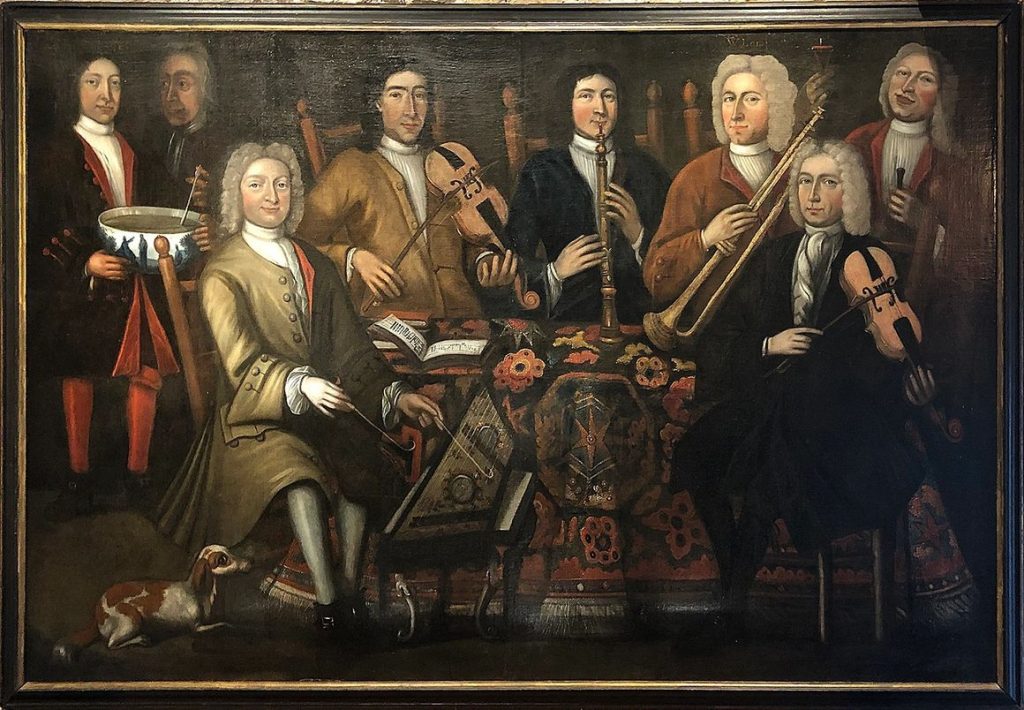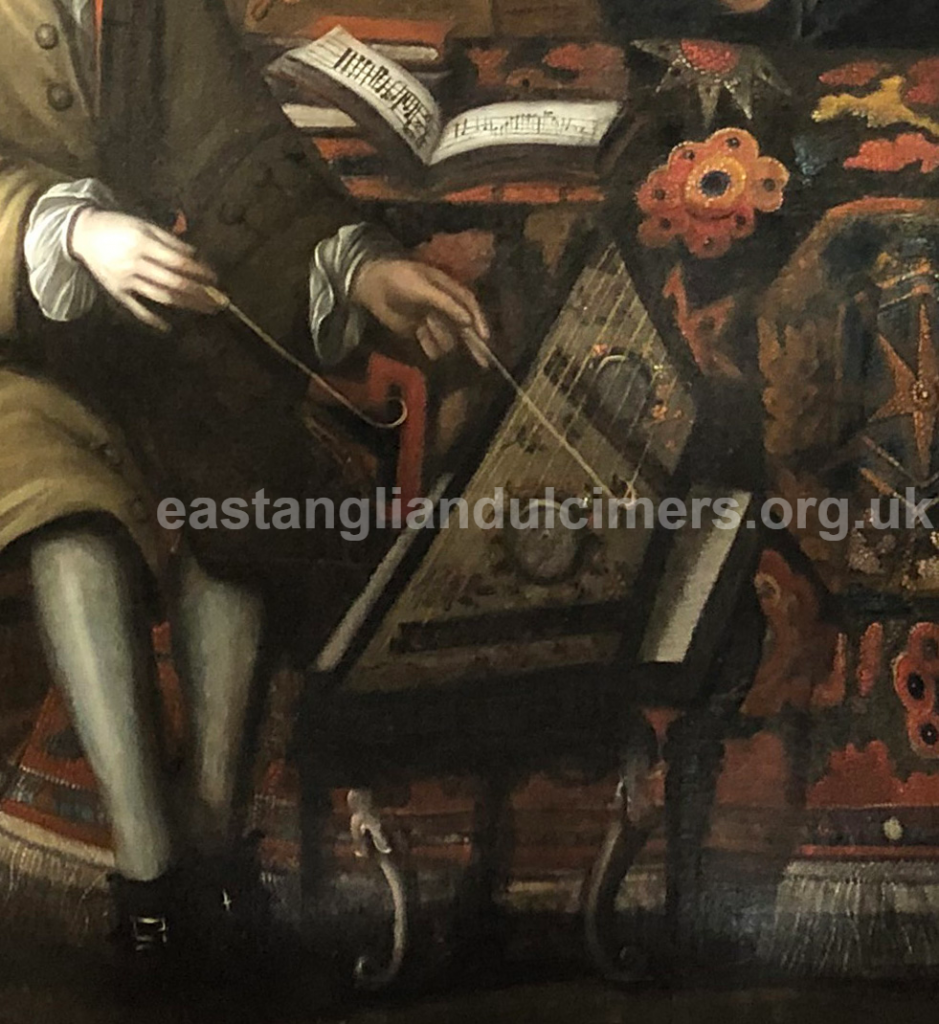Early dulcimers: A Musical Gathering (aka The Gestingthorpe Choir)
The painting

This picture is known as A Musical Gathering (and sometimes referred to as The Gestingthorpe Choir) and it is currently owned by the art historian Philip Mould, who has carried out some research. His interest of course is more in the artist and the picture’s provenance than on its subject matter, but when he alerted the world to this painting in 2020, I knew I’d seen it somewhere else. I eventually decided the dulcimer must be the clue, and sure enough, there it was in Paul M. Gifford’s superb book The Hammered Dulcimer: a History (2001) – just a small black and white detail of the painting showing the dulcimer. Gifford included this as an example of the “genteel domestic use” of the dulcimer and was the first to identify the likely Essex provenance of what had previously been believed to be an American primitive painting, housed for some of the 20th century in the Nassau Museums, Long Island. Because the artist had included the names of all the people, Gifford – through some careful and inspired genealogy – was able to trace the rarer surnames to Essex, England.
The full story of the identification of the painting will be published shortly on my Unsung Histories website.
The people in the painting
I now know that all the people in the painting were farmers and tradesmen who played music as a hobby. Gestingthorpe is a tiny village about six miles from Sudbury in south west Suffolk. Two men came from Gestingthorpe itself, the others mostly from Sudbury. The two Gestingthorpe men were Joseph Rippingale, a renowned local ceramicist (known for his sgraffito harvest jugs) – who is holding the punchbowl on the left – and the dulcimer player himself, John Elliston. Elliston was a prosperous farmer who lived at Moat Farm in Gestingthorpe from 1712 until his death in 1741. There is documentation to show that this painting was still hanging in Moat Farm over 160 years later, until it was sold at auction in 1903 to an American buyer.
Context
By dating the style of clothes (and wigs!) we know that the painting dates from the 1730s.
It is interesting to conjecture as to what was actually going on in the picture. On the table is one tune book, typical shape for the period, and looking to be hand written. Either John Elliston or the violin player on the left, J. Hale may have been able to read this music, but certainly not all of them would be able to see it at the same time, suggesting some were playing by ear. If it is handwritten, it would probably have been copied out from a printed source.
The dulcimer

The dulcimer in the picture appears to have two fixed bridges, which was the style across Europe at this date. In East Anglia, there are no other dulcimers contemporaneous with this one with which to make comparisons , but it is not typical of the later instruments we have found in the eastern region. This one appears to be colourfully painted on the front, a style for which there is not a great deal of evidence in the British Isles generally. The beaters looks similar to bent-cane ones still in use in the region today; these tend to be wound into an elliptical shape at the end and bound with wool. If John Elliston’s beaters were really of this design, there would be a distinct risk of catching them under the strings by mistake! Some artistic licence has been taken with the position of the dulcimer: it needs to be either flat, or tilted towards the player, in which case the front and strings cannot be seen by other people unless they are standing behind the player, but here the artist is allowing the viewer to see the full glory of the front of the dulcimer. This one played by John Elliston may have been locally made; but equally he could have bought it in London or possibly Cambridge or Norwich: the latter city certainly had dulcimer makers working a century later, but whether they were operating as early as the first half of the 18th century is not known.
The nearest in date from the eastern region is that made by John Robinson in Huntingdonshire, a century later, which does show some transitional features from this Gestingthorpe instrument to the later 19th century models which became so widespread.
All material on this website is copyright. Anyone wishing to quote or use this original research should credit it to Katie Howson and cite this website as the source. Please see our Terms and Conditions page for more information, and do contact me if you wish to use any of the contents in any way. Thank you.
